Captain Versus Coach – The Power Shift In Modern Sports Leadership
In professional sports, leadership traditionally flows from coaches and management down to players. Captains serve as on-field extensions of coaching strategy, embodying team values and enforcing discipline. But in recent years, a seismic shift has occurred—captains are increasingly becoming central figures in decision-making, culture-setting, and tactical influence. This transformation is driven by media visibility, player empowerment movements, and the rise of emotionally intelligent leadership. When captains become more powerful than coaches or management, the results can be revolutionary or ruinous. Strong Captain Versus Coach – Who wins!
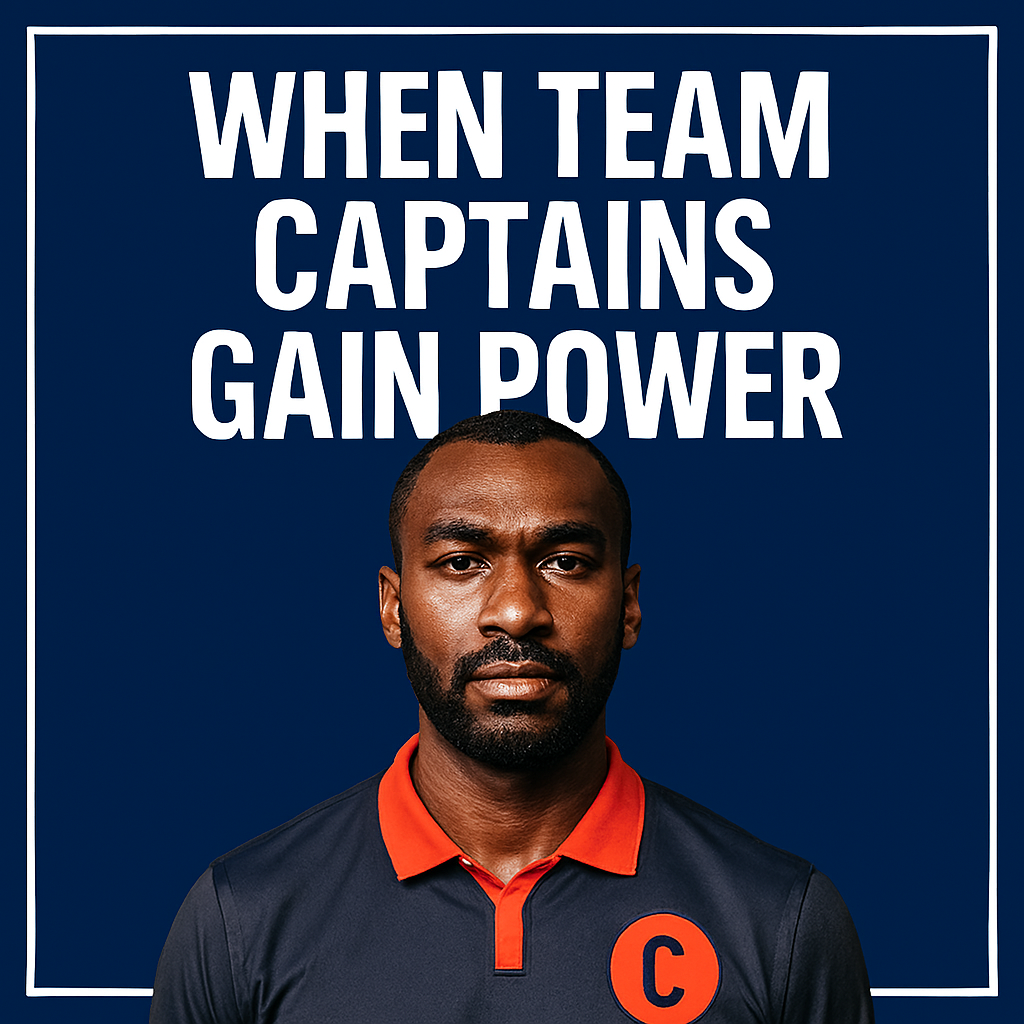
Leadership Roles – Comparing Captain And Coach Influence
Captains and coaches operate in overlapping but distinct leadership domains. When captains gain more influence, the boundaries blur. This table outlines traditional versus expanded roles:
| Role Domain | Traditional Coach Role | Traditional Captain Role | Expanded Captain Role |
|---|---|---|---|
| Tactical Strategy | Designs game plan | Executes coach’s strategy | Co-designs or modifies tactics |
| Culture Building | Sets tone and discipline | Reinforces team values | Leads cultural transformation |
| Media Relations | Speaks post-game | Occasional spokesperson | Primary voice of the team |
| Conflict Resolution | Mediates disputes | Supports resolution | Leads internal negotiations |
| Roster Influence | Minimal input from players | No formal input | Advocates for player changes |
When captains assume expanded roles, they often become de facto co-managers. This can enhance responsiveness but also dilute accountability.
Strategic Clarity – Risks Of Mixed Messaging
Strategic clarity is essential for team cohesion. When captains and coaches send conflicting signals, execution suffers. Consider this breakdown:
| Scenario | Coach Message | Captain Message | Resulting Impact |
|---|---|---|---|
| Defensive Strategy | “Hold the line” | “Push aggressively” | Confusion, missed assignments |
| Player Rotation Philosophy | “Stick to starters” | “Give bench more time” | Tension, morale issues |
| Media Narrative | “We’re rebuilding” | “We’re contenders” | Fan confusion, pressure |
| Training Intensity | “Light recovery week” | “Push through fatigue” | Injury risk, burnout |
Mixed messaging erodes trust and performance. Unified communication is non-negotiable in high-stakes environments.
Emotional Intelligence – When Captains Lead With Empathy
Captains often possess deeper emotional bonds with teammates than coaches do. This can be a strength or a liability. Here’s how emotional leadership plays out:
| Emotional Scenario | Coach Response | Captain Response | Outcome |
|---|---|---|---|
| Player Grieving Loss | “Take time off” | “We’re here for you” | Stronger team cohesion |
| Locker Room Tension | “Address it in meeting” | “Let’s talk privately” | Faster resolution |
| Performance Slump | “Work harder” | “Let’s review together” | Improved confidence |
| Public Criticism | “Ignore the noise” | “I’ve got your back” | Loyalty and resilience |
Captains who lead with empathy can unify teams. But they must balance compassion with accountability.
Cultural Influence – Shaping Identity From Within
Culture is not imposed—it’s lived. Captains who shape culture from within can redefine team identity. Here’s how influence manifests:
| Cultural Element | Coach-Led Culture | Captain-Led Culture | Hybrid Culture |
|---|---|---|---|
| Discipline | Rule-based | Respect-based | Mutual accountability |
| Motivation | External (wins, stats) | Internal (legacy, pride) | Blended drive |
| Inclusion | Top-down initiatives | Peer-driven support | Inclusive rituals |
| Legacy | Coach’s philosophy | Captain’s story | Shared narrative |
Captain-led cultures often feel more authentic. But they require maturity and symbolic clarity to avoid fragmentation.
Media Dynamics – When Captains Become The Face Of The Franchise
In the age of 24/7 media cycles and social platforms, captains often become the public face of a team. Their words carry weight, shaping narratives and influencing fan sentiment. When captains overshadow coaches in media presence, the balance of power shifts. This can be beneficial—captains humanize the team, offer authentic insights, and rally support. But it also introduces risk. Media may bypass coaches entirely, seeking quotes from captains on strategy, injuries, or internal dynamics. This can lead to miscommunication, especially if the captain’s message diverges from the coach’s. Teams must coordinate media strategy to avoid contradictions. Captains should be media-trained to handle pressure and represent collective interests. Coaches, meanwhile, must accept that media influence is part of modern leadership. The table below outlines how media dynamics shift when captains take center stage:
| Media Function | Coach-Led Era | Captain-Led Era |
|---|---|---|
| Press Conferences | Coach dominates | Captain shares spotlight |
| Crisis Communication | Coach controls narrative | Captain offers emotional tone |
| Social Media Presence | Minimal or managed | Direct, personal engagement |
| Fan Mobilization | Coach appeals to tradition | Captain builds community |
| Media Interpretation | Coach sets tactical context | Captain shapes emotional arc |
When managed well, captain-led media engagement can deepen fan loyalty. But without alignment, it can fracture messaging and erode trust.
Contract Politics – Influence Over Roster Decisions
As captains gain influence, their opinions on roster construction carry more weight. This can be a double-edged sword. On one hand, captains understand locker room chemistry better than most executives. Their input can help identify undervalued contributors or flag toxic dynamics. On the other hand, personal biases can cloud judgment. Favoritism, loyalty to underperforming teammates, or resistance to new talent can hinder progress. Coaches and GMs must weigh captain input without ceding control. Transparency in decision-making helps maintain trust. The table below compares decision-making dynamics:
| Roster Decision Type | Coach/GM-Led Approach | Captain-Influenced Approach | Risk Factor |
|---|---|---|---|
| Veteran Retention | Performance-based | Loyalty-based | Sentiment over strategy |
| Rookie Integration | Development-focused | Chemistry-focused | Resistance to change |
| Trade Proposals | Analytics-driven | Personality-driven | Emotional interference |
| Free Agent Recruitment | Budget and fit | Peer appeal | Overpromising roles |
| Disciplinary Cuts | Policy enforcement | Peer negotiation | Undermined authority |
Captains can be valuable advisors—but when they become de facto GMs, the team risks losing strategic objectivity.
Injury Management – Balancing Grit And Health
Captains often set the tone for toughness. Their willingness to play through pain inspires teammates—but it can also pressure others to do the same. When captains gain influence over return-to-play decisions, medical protocols may be compromised. Coaches and medical staff must assert boundaries to protect long-term health. Captains should model responsible recovery, not just resilience. The table below outlines how injury management shifts:
| Injury Scenario | Coach-Led Protocol | Captain-Led Influence | Potential Outcome |
|---|---|---|---|
| Minor Strain | Rest and monitor | “Push through” | Aggravation risk |
| Concussion Protocol | Strict adherence | “We need you” | Long-term health risk |
| Rehab Timeline | Medical benchmarks | “He looks ready” | Premature return |
| Peer Pressure | Discouraged | Normalized | Culture of silence |
| Recovery Culture | Science-based | Grit-based | Mixed signals |
Leadership includes modeling smart recovery. When captains prioritize health, the team follows suit.
Succession Planning – Grooming The Next Leader
When a captain becomes too powerful, succession becomes difficult. Younger players may feel overshadowed or excluded from leadership development. Coaches must ensure that leadership is distributed, not monopolized. Captains should mentor emerging voices, not suppress them. A healthy leadership pipeline ensures continuity and adaptability. The table below compares succession dynamics:
| Leadership Trait | Dominant Captain Model | Distributed Leadership Model | Long-Term Impact |
|---|---|---|---|
| Decision-Making | Centralized | Shared | Resilience vs. rigidity |
| Mentorship | Informal, selective | Structured, inclusive | Broader leadership base |
| Conflict Resolution | One voice | Multiple mediators | Diverse perspectives |
| Legacy Building | Personal narrative | Collective ethos | Sustainable culture |
| Transition Readiness | Abrupt or delayed | Gradual and planned | Smooth handover |
Leadership is not just about power—it’s about preparing others to lead. Captains who embrace this role leave lasting legacies.
Tactical Autonomy – When Captains Start Calling The Plays
In traditional sports hierarchies, tactical decisions are the domain of coaches. They analyze opponents, design formations, and adjust strategies mid-game. Captains execute these plans, offering real-time feedback and enforcing discipline. But in some teams, captains begin to assert tactical autonomy—making in-game adjustments, overruling calls, or even designing plays. This shift can be empowering, especially when the captain has deep game intelligence and rapport with teammates. However, it can also lead to strategic fragmentation. Coaches may feel undermined, and players may receive conflicting instructions. The success of captain-led tactics depends on mutual trust, clear boundaries, and shared vocabulary. Tactical autonomy must be earned, not assumed. The table below compares tactical decision-making models:
| Tactical Scenario | Coach-Led Model | Captain-Led Model | Hybrid Model |
|---|---|---|---|
| Formation Changes | Coach decides | Captain improvises | Pre-approved flexibility |
| Timeout Strategy | Coach calls and directs | Captain initiates | Collaborative planning |
| Set Piece Execution | Coach designs | Captain adapts | Modular options |
| Opponent Adjustments | Coach analyzes | Captain reacts | Shared scouting reports |
| In-Game Leadership | Coach instructs | Captain commands | Dual-channel communication |
When captains are trusted tacticians, they can elevate team responsiveness. But without structure, autonomy becomes chaos.
Fan Dynamics – Loyalty, Identity, And Emotional Investment
Fans often form emotional bonds with captains more than with coaches. Captains represent grit, loyalty, and personality. When captains gain influence, fan dynamics shift. Supporters may rally behind the captain’s vision, even if it contradicts management. This can create tension—especially during contract disputes, coaching changes, or performance slumps. Captains who engage fans authentically can build resilient communities. But they must avoid polarizing rhetoric or undermining team unity. Coaches and captains should present a united front, even amid disagreement. The table below explores fan dynamics:
| Fan Engagement Element | Coach-Centric Era | Captain-Centric Era | Balanced Engagement |
|---|---|---|---|
| Public Identity | Coach defines ethos | Captain embodies values | Shared storytelling |
| Social Media Interaction | Limited, formal | Direct, emotional | Coordinated messaging |
| Merchandise Appeal | Coach-branded gear | Captain-driven sales | Team-first branding |
| Fan Loyalty During Crisis | Coach defended | Captain supported | Transparent communication |
| Legacy Building | Coach’s system | Captain’s journey | Collective milestones |
Captains who understand fan psychology can deepen loyalty—but they must protect team cohesion above personal branding.
Sponsorship Leverage – Commercial Power Of Captains
Captains often become commercial assets. Their visibility, charisma, and social media reach attract sponsors. When captains eclipse coaches in marketability, they gain leverage in negotiations. This can benefit the team—higher revenue, broader exposure, and brand alignment. But it also introduces risk. Sponsors may prioritize captain narratives over team values. Conflicts of interest can arise if a captain’s endorsements clash with team deals. Management must navigate these dynamics carefully. Captains should be briefed on brand strategy and contractual boundaries. The table below outlines sponsorship leverage:
| Sponsorship Factor | Coach-Led Branding | Captain-Led Branding | Integrated Strategy |
|---|---|---|---|
| Brand Alignment | Team-first ethos | Personality-driven | Value-based storytelling |
| Media Campaigns | Coach as strategist | Captain as icon | Dual representation |
| Product Endorsements | Tactical gear | Lifestyle products | Balanced portfolio |
| Revenue Distribution | Centralized | Individual contracts | Transparent sharing model |
| Sponsor Loyalty | System-based | Emotion-based | Long-term partnerships |
Captains can be powerful brand ambassadors—but they must align with team identity and strategic goals.
Locker Room Psychology – Influence, Intimacy, And Authority
The locker room is a sacred space—where vulnerability, motivation, and conflict converge. Captains who dominate this space can unify or divide. Their influence is intimate: they know who’s struggling, who’s thriving, and who’s disengaged. When captains become more powerful than coaches, locker room dynamics shift. Teammates may confide in captains instead of staff. This can accelerate problem-solving—but also conceal issues from management. Captains must balance empathy with transparency. Coaches should respect locker room autonomy while maintaining oversight. The table below explores psychological dynamics:
| Locker Room Element | Coach-Led Culture | Captain-Led Culture | Shared Stewardship |
|---|---|---|---|
| Emotional Safety | Staff-led support | Peer-led empathy | Integrated wellness model |
| Conflict Resolution | Formal mediation | Informal negotiation | Dual-channel resolution |
| Motivational Rituals | Coach-driven | Captain-designed | Collaborative traditions |
| Peer Accountability | Enforced by coach | Modeled by captain | Mutual responsibility |
| Trust Dynamics | Coach as authority | Captain as confidant | Transparent feedback loops |
Captains who steward locker room culture with integrity can transform team psychology—but they must avoid gatekeeping.
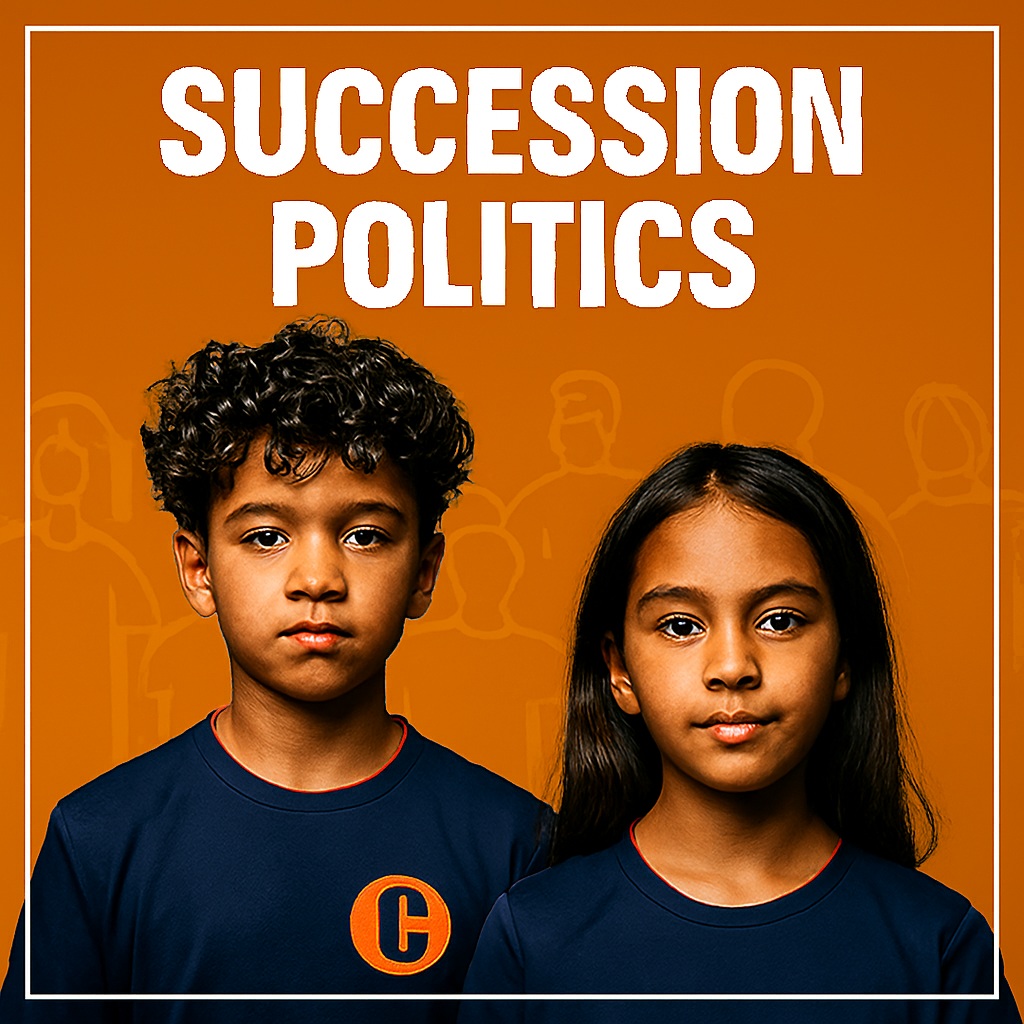
Symbolic Leadership – Legacy, Ritual, And Meaning
Leadership is not just functional—it’s symbolic. Captains often embody the team’s soul. Their gestures, rituals, and narratives shape meaning. When captains become more powerful than coaches, symbolic leadership intensifies. They define what winning means, how losses are processed, and what legacy looks like. This can be profound—especially in multicultural teams or legacy franchises. But it also risks personal myth-making. Captains must anchor symbolism in shared values, not ego. Coaches should embrace symbolic leadership as a tool for cohesion. The table below explores symbolic dynamics:
| Symbolic Element | Coach-Led Interpretation | Captain-Led Interpretation | Shared Symbolism |
|---|---|---|---|
| Victory Rituals | Tactical celebration | Emotional storytelling | Legacy-focused traditions |
| Loss Processing | Analytical review | Emotional framing | Growth-oriented reflection |
| Team Identity | System-based | Narrative-based | Symbolic clarity |
| Multicultural Inclusion | Policy-driven | Ritual-driven | Cultural resonance |
| Legacy Building | Coach’s record | Captain’s journey | Shared milestones |
Symbolic leadership deepens meaning—but it must be inclusive, authentic, and aligned with team purpose.
Conflict Mediation – When Captains Become Internal Diplomats
In high-pressure environments, conflict is inevitable. Disputes may arise between players, between players and coaches, or even between staff and management. Traditionally, coaches mediate these conflicts through formal meetings or disciplinary action. But when captains gain influence, they often become internal diplomats—resolving disputes informally, defusing tension, and preserving team harmony. This can be highly effective, especially when the captain is emotionally intelligent and trusted. However, it can also lead to selective mediation, favoritism, or suppression of dissent. Captains must be trained in conflict resolution and supported by transparent protocols. Coaches should respect the captain’s role while maintaining oversight. The table below compares mediation models:
| Conflict Type | Coach-Led Resolution | Captain-Led Resolution | Hybrid Resolution |
|---|---|---|---|
| Player Disputes | Formal intervention | Peer negotiation | Joint facilitation |
| Coach-Player Tension | Staff-led dialogue | Informal bridge-building | Structured feedback loop |
| Team Culture Clashes | Policy enforcement | Emotional framing | Collaborative norm-setting |
| Performance Criticism | Tactical review | Personal support | Balanced accountability |
| Disciplinary Issues | Rule-based action | Contextual empathy | Dual-channel resolution |
Captains who mediate with fairness and transparency can strengthen team unity—but they must avoid becoming gatekeepers of truth.
Training Philosophy – Shaping Work Ethic And Development
Training is the crucible of performance. Coaches design regimens based on analytics, sports science, and tactical needs. Captains reinforce these standards through example and encouragement. When captains gain influence, they may shape training philosophy—advocating for intensity, rest, or specific drills. This can personalize development and boost morale. But it can also disrupt consistency. Captains may push for routines that suit their style but not the team’s needs. Coaches must integrate captain feedback without compromising structure. The table below outlines training dynamics:
| Training Element | Coach-Led Model | Captain-Led Model | Integrated Model |
|---|---|---|---|
| Intensity Level | Data-driven | Emotion-driven | Adaptive thresholds |
| Drill Selection | Tactical relevance | Positional preference | Rotational design |
| Recovery Protocols | Science-based | Grit-based | Personalized recovery plans |
| Skill Development | Structured curriculum | Peer mentorship | Modular learning |
| Team Bonding Activities | Scheduled | Spontaneous | Ritualized integration |
Captains who shape training with empathy and insight can elevate performance—but they must respect the system’s integrity.
Performance Accountability – Balancing Peer Pressure And Support
Accountability is the backbone of elite sport. Coaches enforce standards through evaluation, feedback, and consequences. Captains reinforce these standards through peer pressure, encouragement, and modeling. When captains become more powerful, they may lead performance reviews, call out underperformance, or set benchmarks. This can foster ownership and resilience. But it can also breed fear, favoritism, or silence. Captains must balance pressure with support. Coaches should empower captains to lead—but ensure that accountability remains fair and constructive. The table below explores accountability dynamics:
| Accountability Element | Coach-Led Enforcement | Captain-Led Enforcement | Shared Accountability |
|---|---|---|---|
| Performance Reviews | Staff-led analysis | Peer feedback | Dual evaluation |
| Underperformance Response | Tactical adjustment | Emotional support | Growth-oriented coaching |
| Benchmark Setting | Statistical targets | Legacy-driven goals | Symbolic milestones |
| Motivational Feedback | Formal sessions | Informal encouragement | Integrated rituals |
| Consequences For Lapses | Disciplinary action | Peer pressure | Transparent consequences |
Captains who lead with integrity and empathy can elevate standards—but they must avoid becoming enforcers of fear.
Legacy Management – Building Meaning Beyond Wins
Legacy is more than trophies—it’s the story a team tells about itself. Coaches often define legacy through systems, records, and milestones. Captains shape legacy through emotion, symbolism, and ritual. When captains gain influence, they may redefine what success means—emphasizing resilience, inclusion, or community impact. This can deepen meaning and inspire future generations. But it can also clash with management’s metrics. Teams must align legacy narratives across all leadership levels. The table below compares legacy models:
| Legacy Element | Coach-Led Narrative | Captain-Led Narrative | Unified Legacy |
|---|---|---|---|
| Success Definition | Wins and stats | Grit and growth | Holistic achievement |
| Cultural Milestones | System evolution | Emotional turning points | Shared rituals |
| Community Engagement | Outreach programs | Personal activism | Team-wide initiatives |
| Multigenerational Impact | Coaching tree | Player mentorship | Legacy pipeline |
| Symbolic Traditions | Institutionalized | Organic and personal | Inclusive storytelling |
Captains who build legacy with humility and vision can transform culture—but they must include all voices.
Decision-Making Structures – From Hierarchy To Modularity
Traditional sports teams operate in hierarchical structures—coaches lead, captains follow, players execute. But when captains gain influence, decision-making becomes modular. Roles blur, authority decentralizes, and collaboration intensifies. This can foster agility and innovation. But it also risks confusion and power struggles. Teams must design clear decision-making protocols that honor both structure and flexibility. Captains should be empowered—but not unchecked. The table below outlines structural models:
| Decision Type | Hierarchical Model | Modular Model | Hybrid Model |
|---|---|---|---|
| Tactical Adjustments | Coach decides | Captain improvises | Pre-approved autonomy |
| Roster Input | Management controls | Captain advises | Collaborative vetting |
| Crisis Response | Coach leads | Captain mobilizes | Dual-channel action |
| Cultural Initiatives | Top-down | Peer-driven | Shared stewardship |
| Leadership Succession | Appointed | Organic emergence | Structured mentorship |
Modular leadership requires clarity, trust, and symbolic alignment. Without it, teams drift into ambiguity.
Adaptive Leadership – The Symbolic Power Of Para Athletes In Team Culture
Para athletes redefine what leadership looks like in professional sport. Their presence challenges outdated assumptions about ability, resilience, and authority. When a para athlete becomes a captain—or even an informal leader—their influence extends beyond tactics. It becomes symbolic. They represent adaptation, grit, and the refusal to be defined by limitation. This symbolic weight can unify teams, deepen emotional intelligence, and reshape cultural norms.
Para athletes often lead through example. Their training regimens are tailored, their equipment customized, and their performance scrutinized more intensely. Yet they persist, adapt, and often outperform expectations. When they rise to leadership roles, they bring a unique lens to team dynamics—one rooted in empathy, strategic flexibility, and psychological resilience. Their lived experience equips them to navigate adversity, mediate conflict, and model inclusive excellence.
However, para athlete captains also face unique challenges. They may be tokenized, overburdened with representation, or subtly excluded from informal leadership circles. Coaches and teammates must actively dismantle these barriers. Leadership must be earned, not granted for optics. Teams that embrace para athletes as full-spectrum leaders—not just inspirational figures—benefit from deeper cohesion and broader emotional range.
Here’s how para athlete leadership reshapes team culture:
| Leadership Dimension | Traditional Captain Model | Para Athlete Captain Model | Cultural Impact |
|---|---|---|---|
| Resilience Narrative | Performance under pressure | Adaptation through adversity | Symbolic depth |
| Training Philosophy | Standardized intensity | Customized and strategic | Flexibility and empathy |
| Team Inclusion | Peer-driven bonding | Advocacy through experience | Broader emotional literacy |
| Conflict Resolution | Tactical mediation | Empathetic negotiation | Trust and psychological safety |
| Legacy Building | Win-based storytelling | Meaning-based storytelling | Inclusive legacy rituals |
Para athletes don’t just lead—they reframe what leadership means. Their presence is not a footnote in team history. It’s a chapter of transformation. When teams elevate para athletes to leadership roles with full respect and symbolic clarity, they don’t just win games. They evolve.
Multicultural Dynamics – Leadership Across Diverse Backgrounds
Modern sports teams are increasingly multicultural, with players from varied ethnic, linguistic, and cultural backgrounds. Captains who rise to power must navigate this diversity with sensitivity and symbolic clarity. Unlike coaches, who may rely on institutional norms, captains operate within peer networks—where cultural fluency matters. A powerful captain must understand how different players interpret leadership, motivation, and conflict. Missteps can alienate teammates or reinforce cultural hierarchies. When captains embrace inclusive rituals and multilingual communication, they foster unity. Coaches should support captains with cultural training and inclusive frameworks. The table below explores multicultural leadership dynamics:
| Cultural Element | Coach-Led Approach | Captain-Led Approach | Inclusive Model |
|---|---|---|---|
| Language Use | Official language only | Multilingual adaptation | Translational support |
| Motivational Style | Uniform messaging | Culturally tailored | Symbolic resonance |
| Team Rituals | Standardized | Regionally inspired | Hybrid traditions |
| Conflict Interpretation | Policy-based | Contextual empathy | Cultural mediation |
| Leadership Recognition | Tenure-based | Respect-based | Shared storytelling |
Captains who lead across cultures must balance authenticity with adaptability. Their symbolic choices shape belonging.
Emotional Fallout – When Leadership Fails To Protect
Leadership is not just about strategy—it’s about emotional stewardship. When captains become powerful but fail to protect teammates emotionally, fallout ensues. Players may feel abandoned, unheard, or manipulated. This is especially true during slumps, injuries, or public criticism. Coaches traditionally buffer players from external pressure. Captains must now share that burden. If they prioritize performance over wellbeing, trust erodes. Emotional fallout manifests in disengagement, passive resistance, or even public dissent. Teams must build emotional safety nets—rituals, peer support, and transparent feedback. The table below outlines emotional risks:
| Emotional Scenario | Healthy Captain Response | Harmful Captain Response | Recovery Strategy |
|---|---|---|---|
| Public Criticism | “We stand together” | “That’s on him” | Unified messaging |
| Injury Recovery | “Take your time” | “We need you now” | Medical-first culture |
| Performance Slump | “Let’s work through it” | “You’re letting us down” | Growth-oriented coaching |
| Personal Crisis | “We’ve got your back” | “Don’t bring it here” | Peer-led empathy |
| Locker Room Isolation | “Let’s reconnect” | “He’s not committed” | Inclusion rituals |
Captains must protect emotional integrity—not just enforce discipline. Their legacy depends on how they handle vulnerability.
Succession Politics – Who Gets To Lead Next
When captains hold disproportionate power, succession becomes political. Emerging leaders may be sidelined, overlooked, or discouraged. Coaches traditionally manage leadership transitions through structured mentorship. But when captains dominate, succession becomes informal—based on loyalty, charisma, or performance. This can breed resentment and factionalism. Teams must institutionalize leadership development—rotating responsibilities, recognizing diverse styles, and preparing successors. Captains should mentor without gatekeeping. The table below explores succession politics:
| Succession Element | Coach-Led Transition | Captain-Led Transition | Structured Succession |
|---|---|---|---|
| Mentorship Access | Assigned | Selective | Inclusive pipeline |
| Leadership Criteria | Tenure and performance | Charisma and loyalty | Transparent benchmarks |
| Role Rotation | Scheduled | Sporadic | Ritualized progression |
| Feedback Mechanisms | Formal reviews | Informal praise | Dual-channel evaluation |
| Symbolic Handover | Institutional ceremony | Personal gesture | Shared legacy ritual |
Leadership must be renewable. Captains who nurture successors leave lasting impact—not just personal glory.
Symbolic Rituals – Anchoring Meaning In Action
Symbolic rituals are the heartbeat of team culture. Captains often design or lead these rituals—pregame huddles, victory chants, memorial tributes. These acts anchor meaning, unify identity, and transmit values. When captains become powerful, their rituals shape team ethos. But rituals must be inclusive, not performative. Coaches should support symbolic leadership while ensuring alignment with team values. Rituals must evolve with the team—not ossify around one personality. The table below explores ritual dynamics:
| Ritual Type | Coach-Led Tradition | Captain-Led Tradition | Shared Ritual Framework |
|---|---|---|---|
| Pregame Motivation | Tactical briefing | Emotional invocation | Dual-channel preparation |
| Victory Celebration | Standard protocol | Personalized gesture | Legacy-focused ritual |
| Loss Processing | Analytical review | Symbolic reflection | Growth-oriented ceremony |
| Team Milestones | Institutional recognition | Peer-led storytelling | Inclusive celebration |
| Cultural Inclusion | Policy-driven | Ritual-driven | Multicultural resonance |
Symbolic rituals must serve the team—not just the leader. Captains who curate meaning with humility build enduring culture.
Legacy Transitions – When Captains Step Down
The moment a powerful captain steps down is pivotal. It tests the team’s resilience, identity, and leadership pipeline. If the captain monopolized influence, the vacuum may destabilize the team. If they mentored successors, the transition can be seamless. Coaches must prepare for this moment—ritualizing the handover, honoring legacy, and empowering new voices. Captains should exit with grace, clarity, and symbolic generosity. The table below outlines legacy transitions:
| Transition Element | Healthy Exit | Disruptive Exit | Ritualized Transition |
|---|---|---|---|
| Timing | Planned and gradual | Abrupt and reactive | Structured timeline |
| Successor Preparation | Mentored and supported | Isolated and unready | Leadership incubation |
| Legacy Framing | Shared narrative | Personal myth-making | Inclusive storytelling |
| Team Identity Shift | Evolutionary | Fragmented | Symbolic continuity |
| Post-Captain Role | Advisor or mentor | Absent or critical | Legacy stewardship |
Power Imbalances – When Influence Becomes Intimidation
As captains gain more authority, the risk of power imbalances grows. A captain who once inspired teammates may begin to dominate them—dictating behavior, silencing dissent, or enforcing loyalty. This shift can be subtle: younger players may feel pressured to conform, while veterans may disengage. Coaches must monitor these dynamics closely. Leadership should empower, not intimidate. When captains become gatekeepers to playing time, media access, or social belonging, the team’s psychological safety erodes. The table below outlines how power imbalances manifest and how they can be corrected:
| Power Dynamic | Healthy Leadership | Toxic Leadership | Corrective Action |
|---|---|---|---|
| Peer Feedback | Encouraged and open | Suppressed or mocked | Anonymous feedback channels |
| Social Inclusion | Inclusive and rotating | Clique-driven | Ritualized team bonding |
| Playing Time Influence | Transparent and earned | Politicized or biased | Coach-led performance reviews |
| Media Representation | Shared and strategic | Hoarded or manipulated | Rotational media access |
| Cultural Norms | Co-created and evolving | Imposed and rigid | Periodic cultural audits |
Unchecked power corrodes trust. Captains must lead with humility, not hierarchy.
Media Manipulation – Shaping Narratives For Control
Captains with media savvy can shape public narratives to their advantage. This can be a strategic asset—deflecting pressure, rallying fans, or protecting teammates. But it can also be manipulative. When captains use media to undermine coaches, justify poor performance, or elevate their brand, the team suffers. Coaches may lose credibility, and internal issues may be aired publicly. Teams must coordinate media strategy and establish clear boundaries. Captains should be trained in ethical storytelling and crisis communication. The table below explores media manipulation risks:
| Media Scenario | Ethical Use | Manipulative Use | Safeguard Strategy |
|---|---|---|---|
| Post-Game Comments | Honest and team-focused | Blame-shifting or vague | Pre-briefed talking points |
| Social Media Posts | Inspirational or reflective | Cryptic or divisive | Media literacy training |
| Injury Updates | Transparent and aligned | Contradictory or misleading | Unified medical messaging |
| Contract Negotiations | Private and respectful | Public leverage tactics | Internal communication plans |
| Legacy Narratives | Inclusive and accurate | Self-aggrandizing | Shared storytelling protocols |
Media is a mirror and a megaphone. Captains must use it to reflect truth, not distort it.
Coach Resistance – When Authority Pushes Back
Not all coaches welcome captain empowerment. Some view it as a threat to their authority or a dilution of discipline. This resistance can lead to power struggles, passive-aggressive behavior, or even public feuds. When coaches feel undermined, they may withhold trust, limit communication, or isolate the captain. This creates a toxic environment. Teams must foster mutual respect and clarify roles. Leadership is not a zero-sum game—it’s a shared responsibility. The table below outlines coach resistance patterns and resolution strategies:
| Resistance Behavior | Root Cause | Impact On Team | Resolution Strategy |
|---|---|---|---|
| Withholding Information | Fear of being bypassed | Tactical confusion | Transparent planning sessions |
| Public Criticism | Assertion of control | Media tension | Unified messaging protocols |
| Exclusion From Decisions | Retaliatory behavior | Leadership fragmentation | Joint decision frameworks |
| Favoring Other Players | Undermining influence | Locker room division | Performance-based evaluation |
| Limiting Autonomy | Insecurity or tradition | Stifled innovation | Role redefinition workshops |
Coaches and captains must evolve together—or risk tearing the team apart.

Fan Polarization – Choosing Sides In Leadership Conflicts
When captains and coaches clash, fans often take sides. This polarization can energize or divide the fanbase. Supporters may rally behind the captain’s authenticity or the coach’s discipline. Social media amplifies these divisions, turning internal dynamics into public debates. Teams must manage fan narratives carefully. Transparency, unity, and shared messaging are essential. Captains and coaches should present a united front—even amid disagreement. The table below explores fan polarization dynamics:
| Fan Reaction | Trigger Event | Impact On Team | Mitigation Strategy |
|---|---|---|---|
| Captain Worship | Charismatic leadership | Undermines coach authority | Balanced storytelling |
| Coach Loyalty | Tactical success | Isolates players | Inclusive recognition |
| Social Media Campaigns | Contract disputes | Public pressure on management | Controlled communication |
| Merchandise Boycotts | Leadership changes | Revenue loss | Fan engagement forums |
| Online Harassment | Media missteps | Mental health strain | Digital conduct policies |
Fan energy must be channeled—not weaponized. Teams must lead the narrative, not react to it.
Long-Term Cultural Consequences – What Endures After The Shift
When captains become more powerful than coaches or management, the cultural consequences endure long after they retire. Their leadership style becomes a template—replicated by successors, institutionalized in rituals, and embedded in team identity. If the captain led with integrity, the culture thrives. If they led with ego, dysfunction lingers. Teams must periodically audit their culture—asking: whose values are we living? What stories are we telling? What behaviors are we rewarding? The table below outlines long-term cultural outcomes:
| Leadership Legacy | Cultural Outcome | Risk Profile | Renewal Strategy |
|---|---|---|---|
| Inclusive Leadership | Empowered, resilient culture | Sustainable | Mentorship pipelines |
| Charismatic Dominance | Hero worship | Fragile, leader-dependent | Distributed leadership |
| Tactical Innovation | Adaptive, agile culture | High performance | Knowledge documentation |
| Emotional Neglect | Burnout, silence | High turnover | Wellness integration |
| Symbolic Clarity | Deep meaning, loyalty | Legacy-driven | Ritual evolution |
Culture is a living system. Captains shape it—but teams must steward it.
Conclusion – Navigating The Power Shift With Clarity And Respect
When captains become more powerful than coaches and management, the outcomes are neither inherently good nor bad—they are complex. This shift can unlock emotional intelligence, tactical responsiveness, and cultural depth. But it can also introduce ambiguity, conflict, and strategic drift. Success depends on clarity, mutual respect, and shared purpose. Teams must define boundaries, foster dialogue, and build leadership pipelines. Captains must embrace mentorship, transparency, and humility. Coaches must evolve from commanders to collaborators. Management must steward culture, not just contracts. The future of sports leadership is not hierarchical—it’s modular, symbolic, and emotionally intelligent. Navigating this shift requires wisdom, structure, and trust.
Join The Discussion – What Leadership Model Works Best In Your Sport
Have you witnessed a captain-led transformation in your favorite team? Do you believe emotional intelligence should outweigh tactical authority?
#LeadershipShift #CaptainCulture #SportsPsychology #TeamDynamics #SymbolicLeadership #EmotionalIntelligenceInSport #TacticalAutonomy #FanLoyalty #LockerRoomWisdom #CaptainVersusCoach
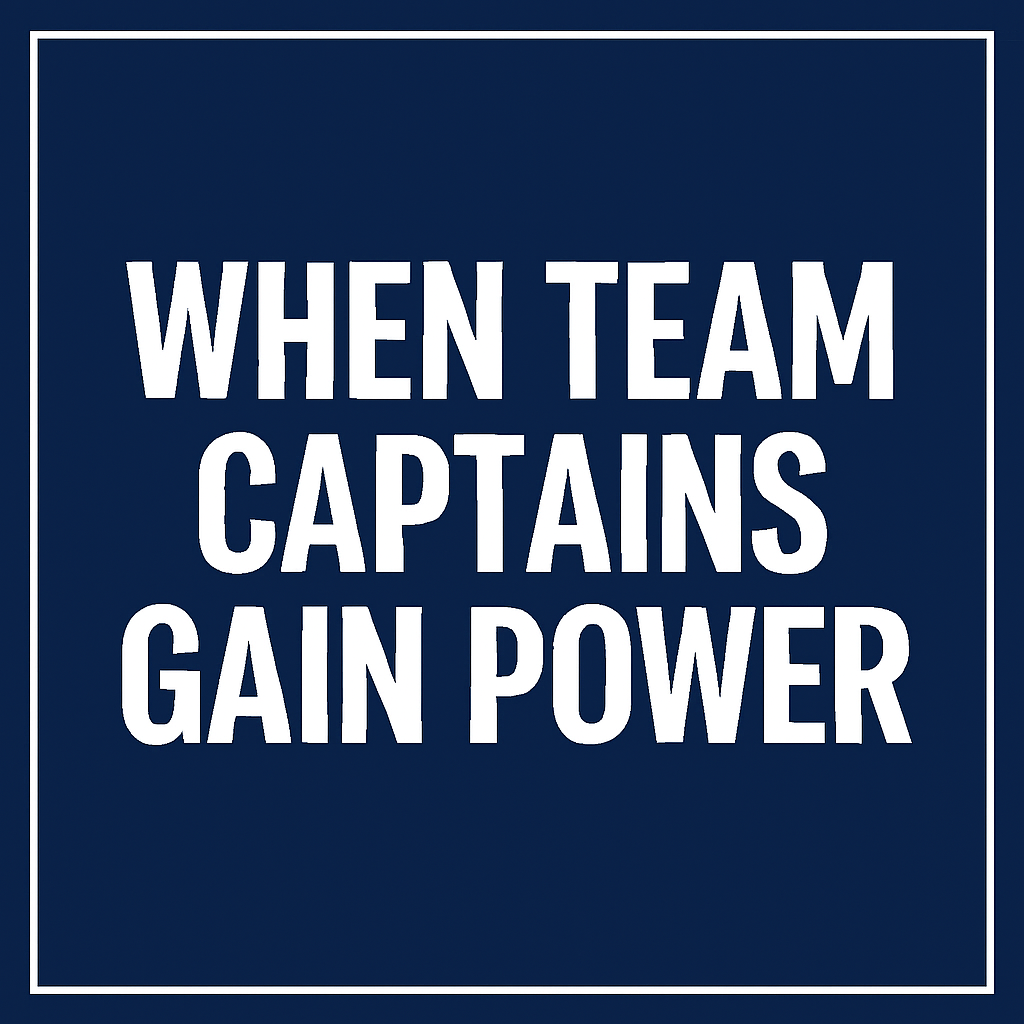
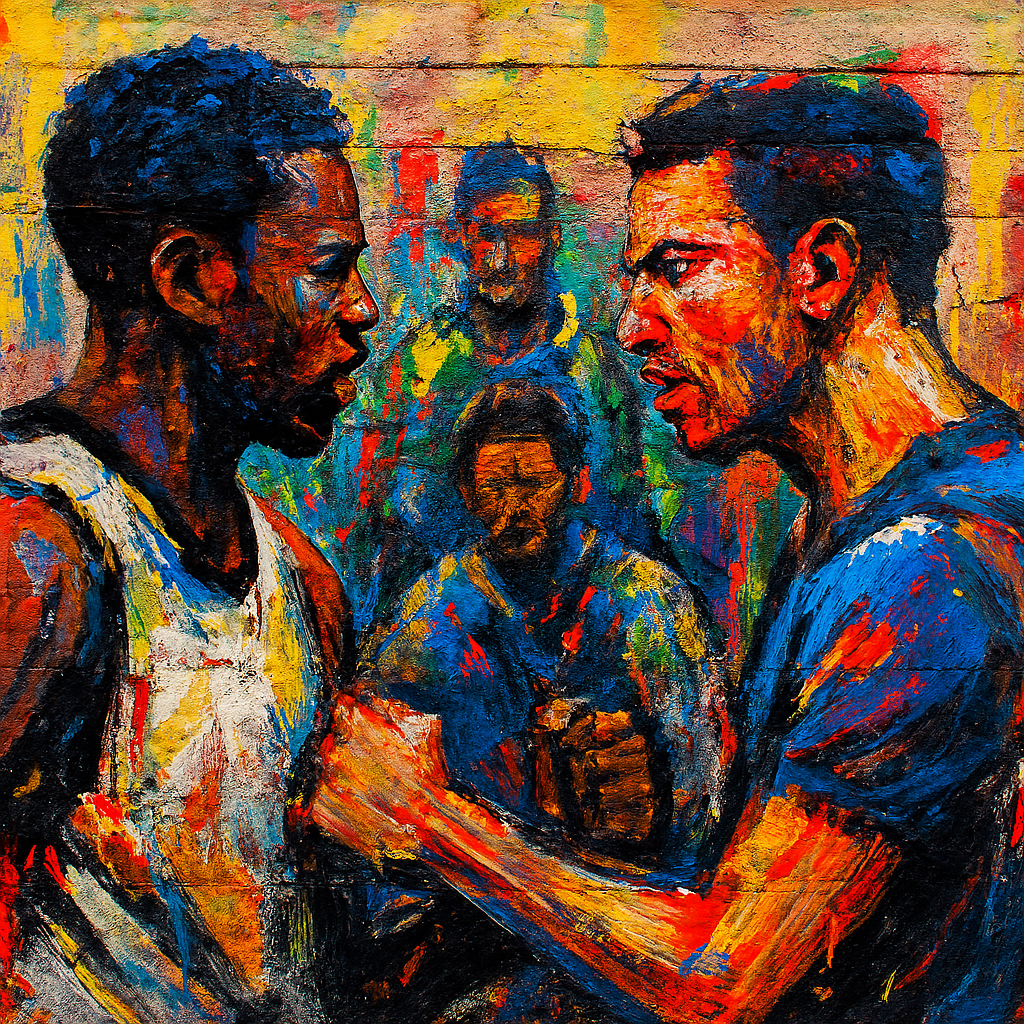


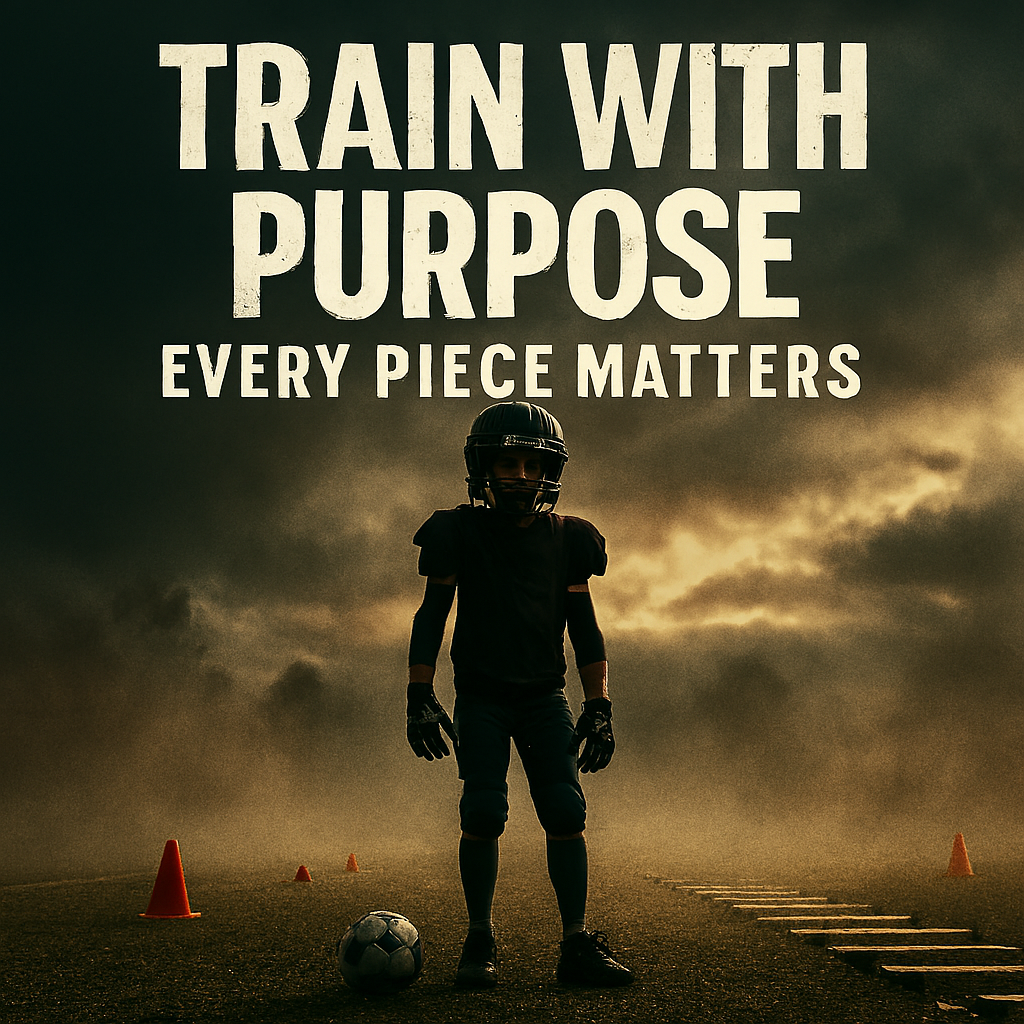

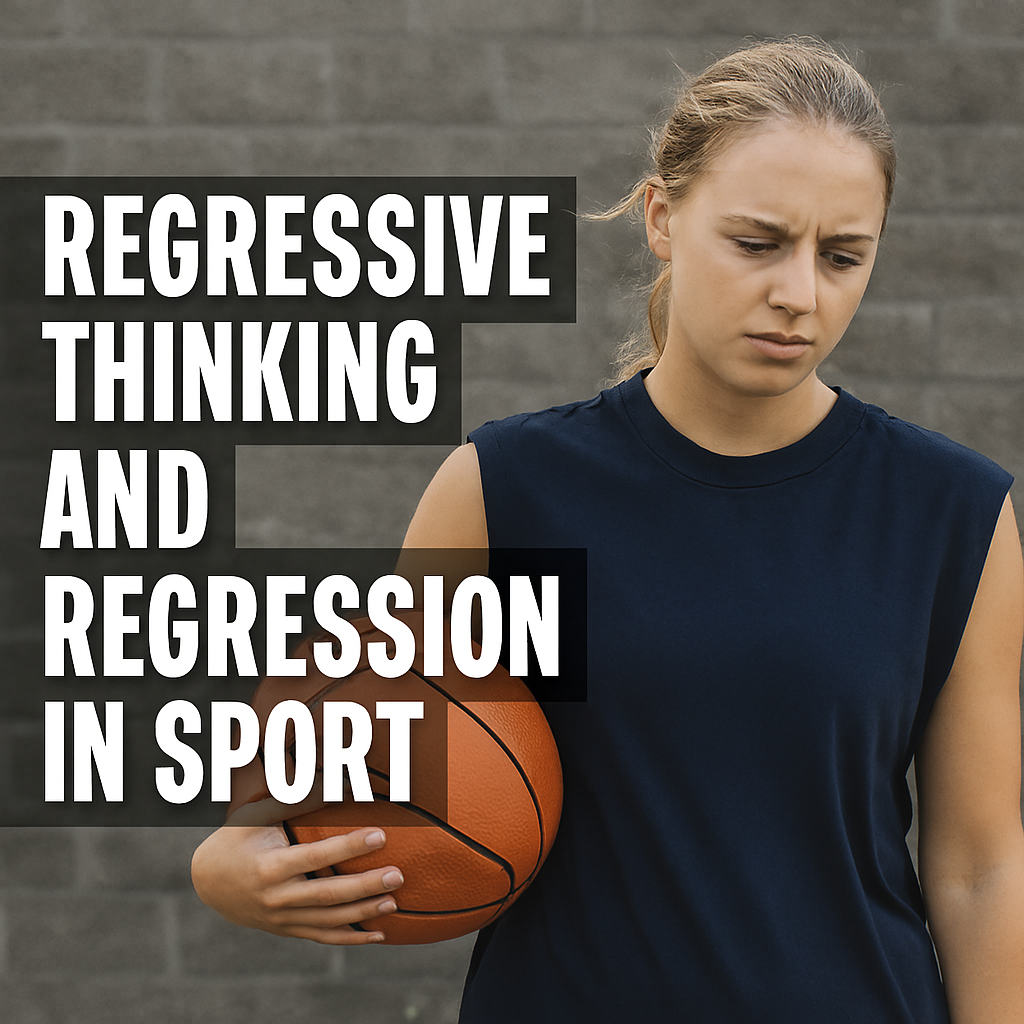
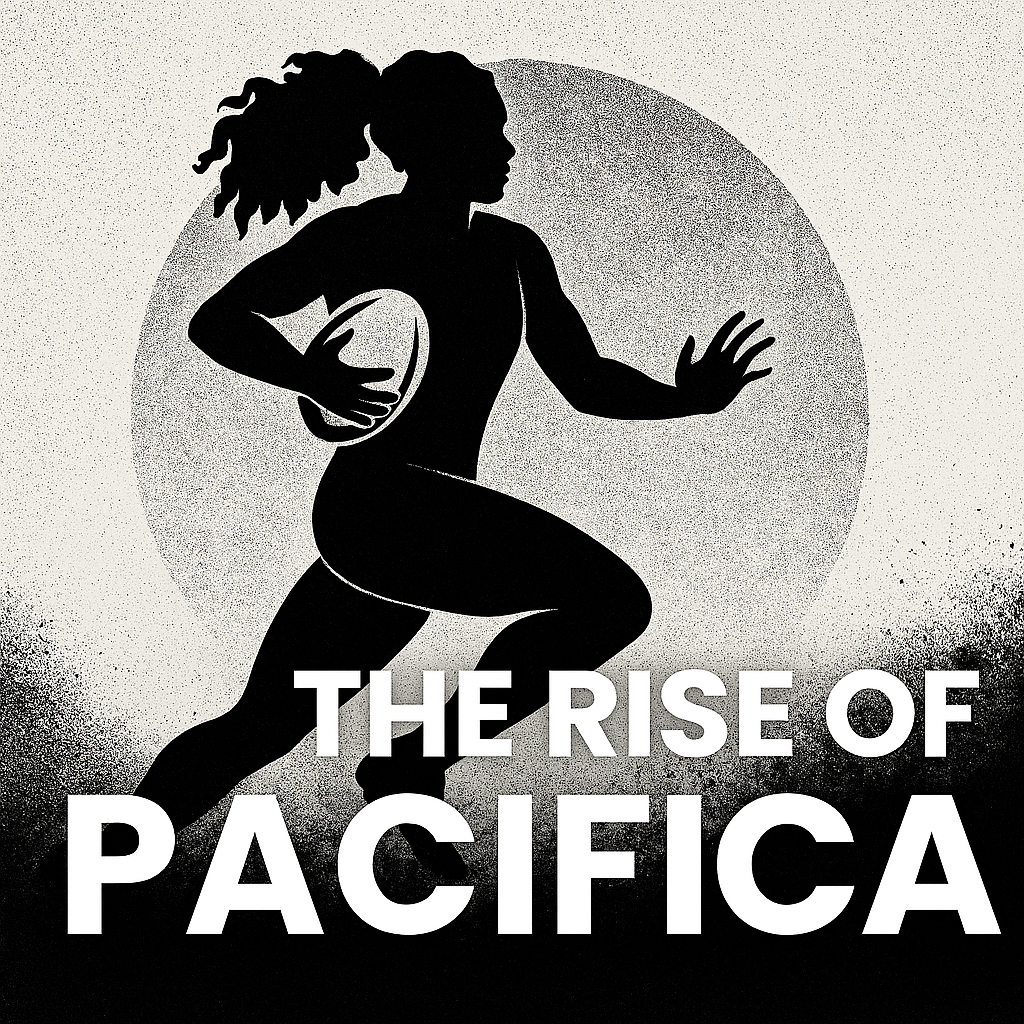






Leave a Reply